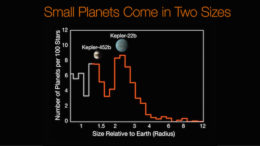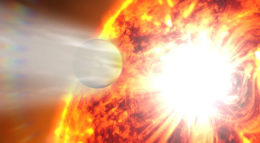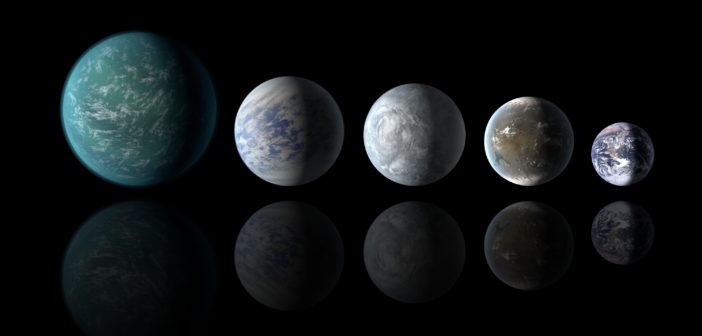As of last week, the count of confirmed exoplanets officially exceeds 4,000 — and while we’ve learned a lot about planet formation from this wealth of data, it’s also prompted new questions. Could the recent detection of two intriguing new planets shed light on one of these open puzzles?

In 2017, a team of scientists led by B.J. Fulton identified a gap in the distribution of radii of small Kepler-discovered planets. [NASA/Ames/Caltech/University of Hawaii (B. J. Fulton]
Mind the Gap
Our growing exoplanet statistics recently revealed a curious trait: there’s a gap in the radius distribution of planets slightly larger than Earth. Rocky super-Earth planets of up to ~1.5 Earth radii are relatively common, as are gaseous mini-Neptunes in the range of ~2–4 Earth radii. But we’ve detected very few planets in between these sizes.
What’s the cause of this odd deficit? One theory is that high-energy radiation emitted by stars early in their lifetimes erodes the atmospheres of planets that are too close in, stripping them of their expansive shells of gas and leaving behind only their dense, rocky cores. Planets that lie further out or start with a thicker shell may be spared this fate, retaining some of their gas for a significantly larger, fluffier construction.
Disentangling Factors

Folded light curves for HD 15337 showing the transits of planets b (top) and c (bottom). [Gandolfi et al. 2019]
But a recent discovery from the Transiting Exoplanet Survey Satellite (TESS) may help simplify this picture. With more than 750 planet-candidate detections so far, TESS is rapidly adding to our exoplanet statistics — and two TESS-discovered planets around HD 15337 may be especially useful for better understanding the radius gap.
A Non-Identical Pair
In a publication led by Davide Gandolfi (University of Turin, Italy), a team of scientists carefully analyzes the TESS light curves for HD 15337, as well as archival spectroscopic data from the High Accuracy Radial velocity Planet Searcher. They show that there is evidence for the presence of two planets — HD 15337 b and c — that have similar masses: ~7.5 and ~8.1 Earth masses, respectively.
But while HD 15337 b appears to be a close-in (period of 4.8 days), rocky super-Earth with radius of 1.6 Earth radii and density of 9.3 g/cm3, HD 15337 c lies further out (period of 17.2 days) and is a fluffy mini-Neptune, with a radius of 2.4 Earth radii and a density of 3.2 g/cm3.

Artist’s impression of a star’s high-energy radiation evaporating the atmosphere of its planet. [NASA’s Goddard SFC]
As our observational statistics for exoplanets continue to grow, it’s exciting to see how these continued discoveries can both raise and address new questions of planet formation and evolution. Who knows what else we’ll learn as detections continue to pile up!
Citation
“The Transiting Multi-planet System HD15337: Two Nearly Equal-mass Planets Straddling the Radius Gap,” Davide Gandolfi et al 2019 ApJL 876 L24. doi:10.3847/2041-8213/ab17d9

2 Comments
Pingback: Hot planets hiding under a shroud of dust and gas | astrobites
Pingback: Come on Feel the Noise (Floor) feat. PLATO | astrobites